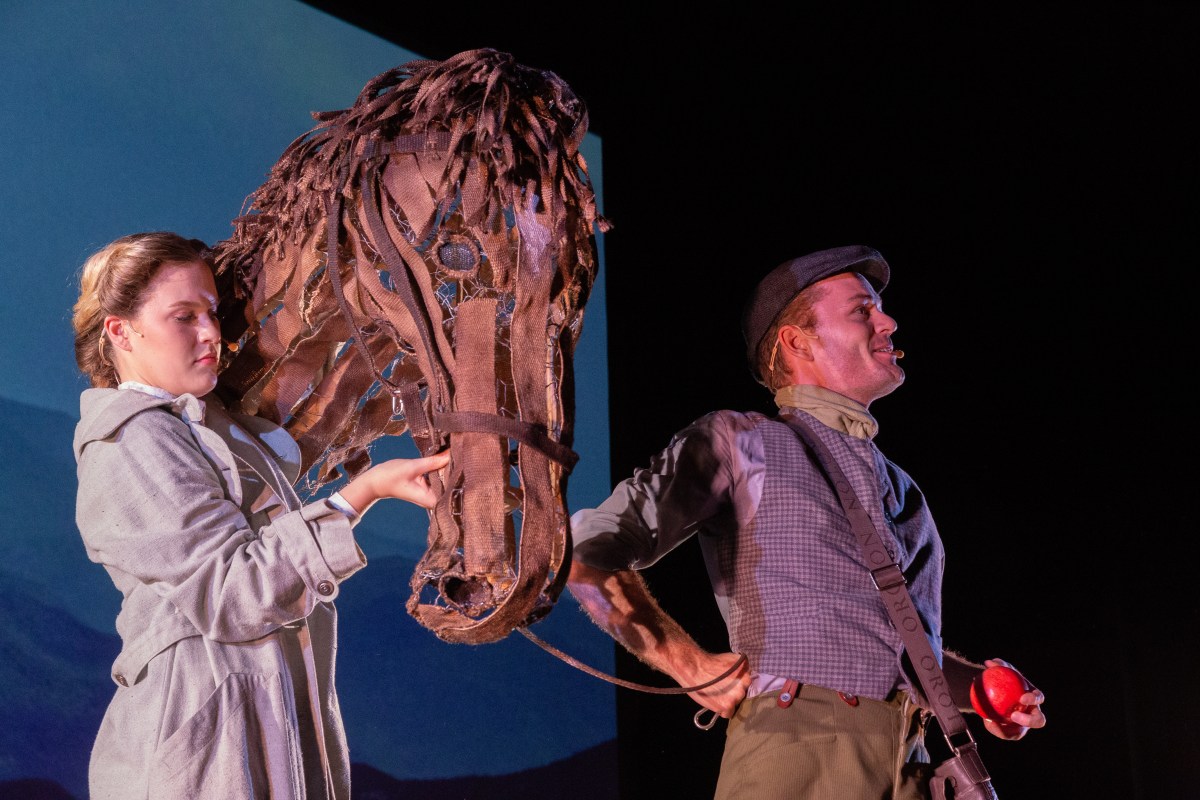The Lighthouse Girl Saga is the third production by Theatre 180 in the hybrid cine-stage art form that blends film projection with live performance in a cinema setting. The production is an ambitious endeavour, interweaving several stories drawn from four award-winning books by writer, Dianne Wolfer: Lighthouse Girl, Light Horse Boy, In the Lamplight and The Last Light Horse.
Wolfer’s series is historical fiction set during the World War I. Each book integrates storytelling with extensively researched archival material, journal entries, letters and images from the war. The stories profile the experiences of a girl on a lighthouse island off the coast of Albany, Western Australia, as well as those of an English nurse caring for wounded Australian soldiers recuperating in England, and a Major General who is killed in Gallipoli.
In the fourth book, historical references include those from the Light Horse Manual used by soldiers. It tells the story of Sandy, the only warhorse of the 136,000 ‘Walers’ sent abroad to return to Australia.
The Lighthouse Girl Saga has been boldly adapted for the cine-stage genre by Jenny Davis and Hellie Turner. The scope is impressive and detailed attention is given to stories and historical references from all four books in the series. There is a plethora of characters, including young soldiers, Charlie and Jim, Fay (the lighthouse girl), as well as English nurse, Rose, whose chicken Henrietta is a standout element, as is the story of the warhorse, Sandy.
Read: Can live theatre in cinemas reel in new arts audiences?
Director Stuart Halusz describes the production as a series of love stories: love of family, story, place. There is density of storytelling, at times it’s a little too entangled. The production is directed from a singular point of view that tends to a meta-narrative of whiteness during a fraught period of Australian history. Each storied thread is methodically paced, at times lacking the sufficient energy and risk-taking that would allow for narrative clarity and distinction between characters.
Audience members are nonetheless captivated by the cine-stage form, with beautiful cinematography and helpful textual elements projected to indicate the time and place of the stories.
The cast includes Sienna Cate, Isaac Diamond and Nick Maclaine, who diligently and earnestly assume various characters against the backdrop of unfolding events of the Great War. The actors begin confidently, walking onto the raised stage to gaze at the projected image looming above, before turning to face the audience to each announce, ‘On this day…’.
It is 1914. Opening credits roll as the actors move to change costumes and position props from the sides of the stage. The stories unfold precisely, subject to projected visual cues. There is slippage of accents as characters take on multiple roles; the cadence of language a metronome marking time, until the Armistice on 11 November 1918.
The screen’s size dominates the space, but it is used effectively to help audiences understand the change in scenes between Australia and England, and various locations in the two-front war. Inherent in the decision to match projection with live performance is the challenge of timing and pacing for the actors. The immediacy of live performance is constrained by the visual recording. Archival footage is a strength of the projection, as are charcoal illustrations by Brian Simmonds, who is the illustrator for Wolfer’s books.
Read: Theatre review: Moth, Theatre Works
The Lighthouse Girl Saga is weighty with nostalgia. Audiences are invited on a journey of emotional endurance as they follow the stories of people and animals alike throughout the course of World War I. Interwoven love stories are braided within a historical context allowing for a glimpse of moments of young lives lived and lost.
The Lighthouse Girl Saga presented by Theatre 180
ACE Cinemas, Western Australia
Author: Dianne Wolfer
Script Writers: Jenny Davis and Hellie Turner
Director: Stuart Halusz
Cast: Sienna Cate, Isaac Diamond, Nick Maclaine
Sound Design and Programmer: Ben Collins
Visual Design: Gneiss Design
Visual Production: Sunburnt Films
Costume Designer: Lynn Ferguson
Theme Song Composer: Craig Skelton
Production Manager: Garry Ferguson
Lighting Designer and Stage Manager: Aaron Stirk
Assistant Stage Manager: Craig Williams
The Lighthouse Girl Saga is showing in Western Australia at ACE Cinemas Midland, 19-28 May then touring to ACE Cinemas Rockingham from 9-11 June.
.





